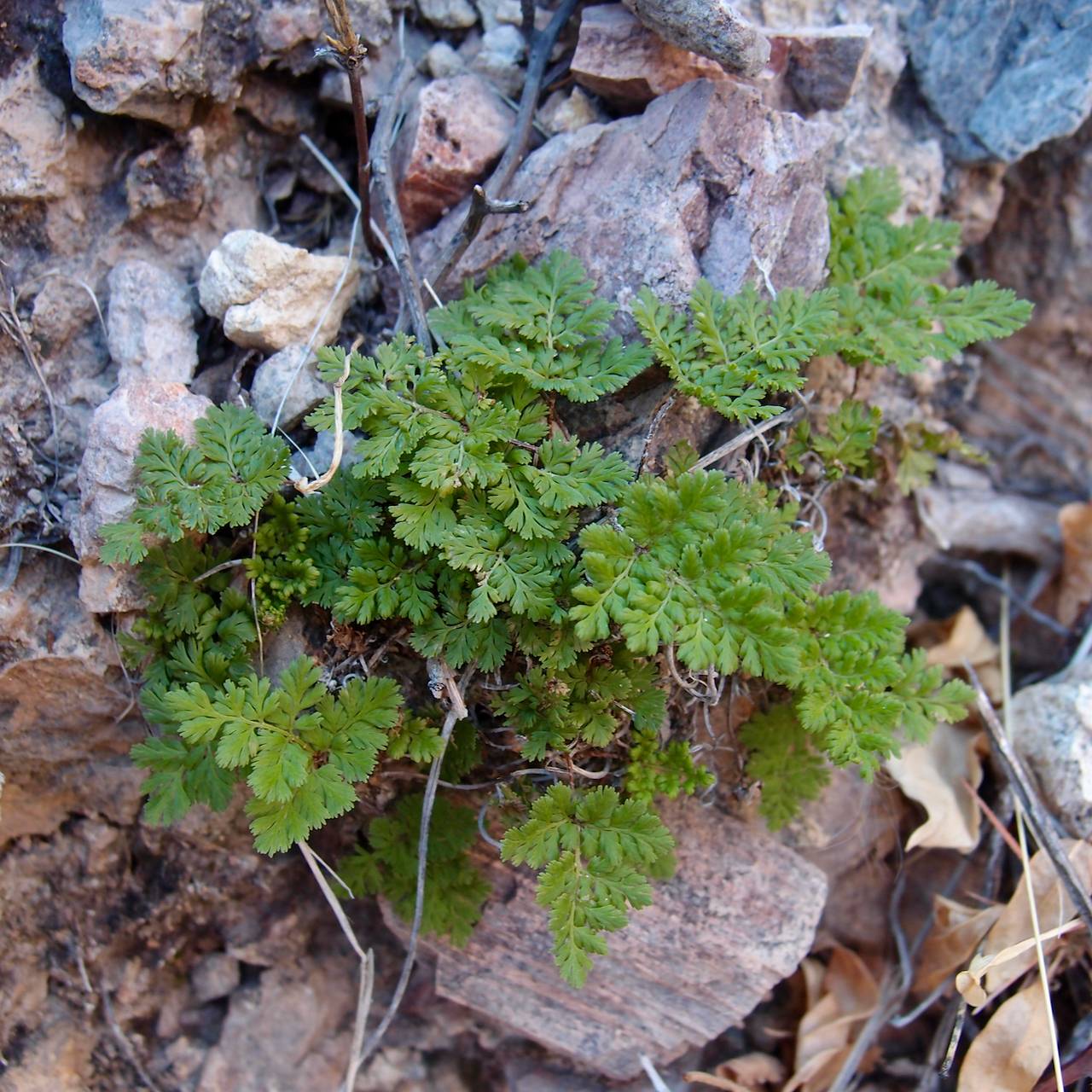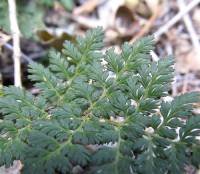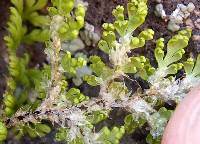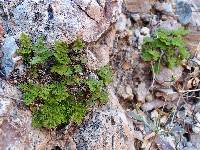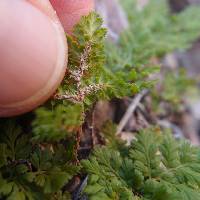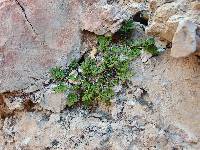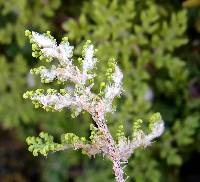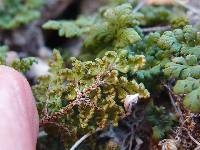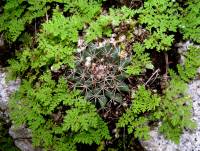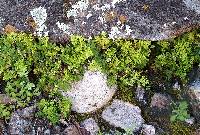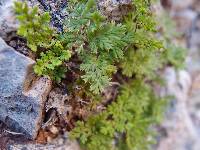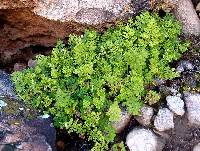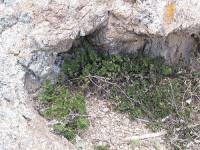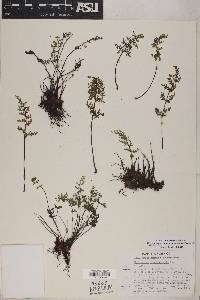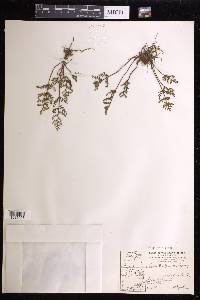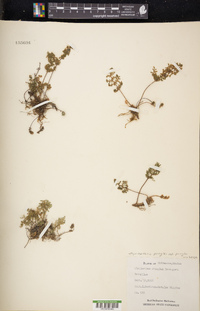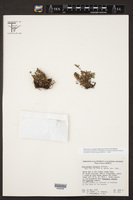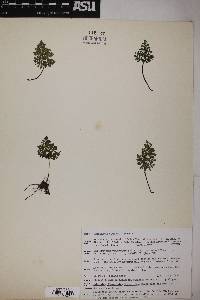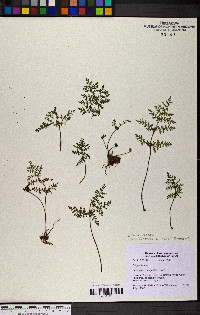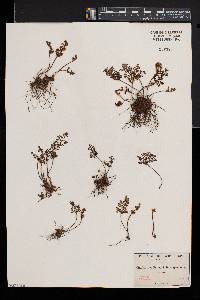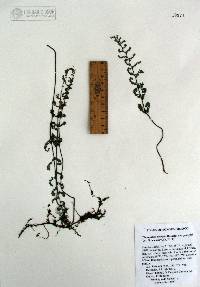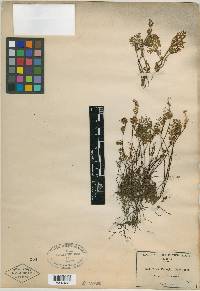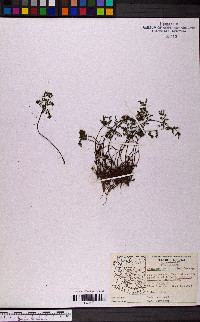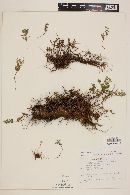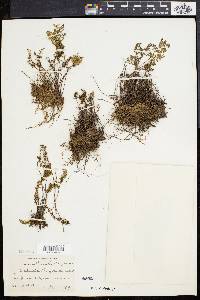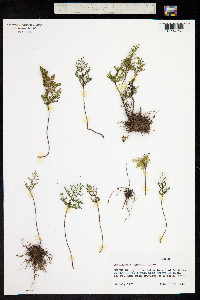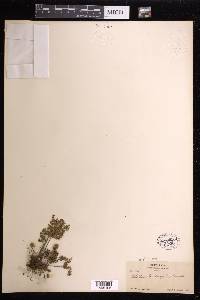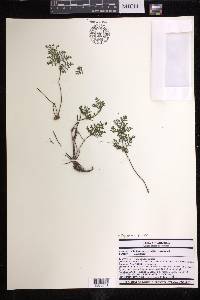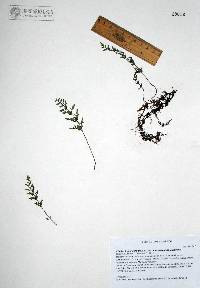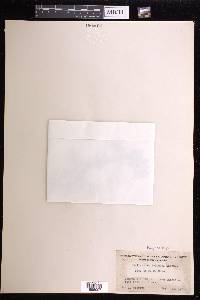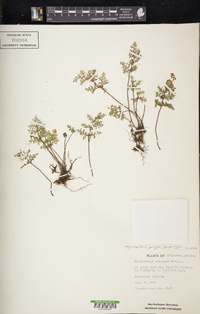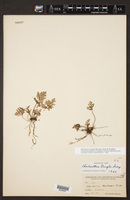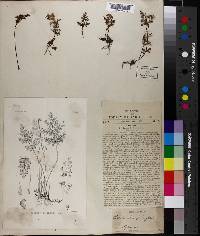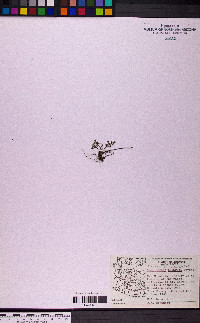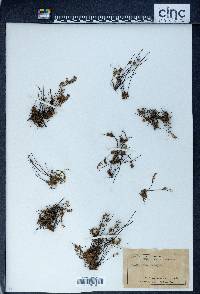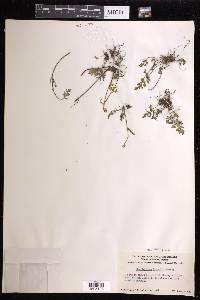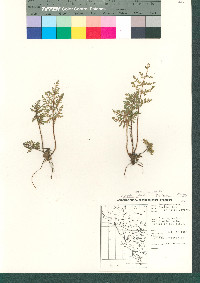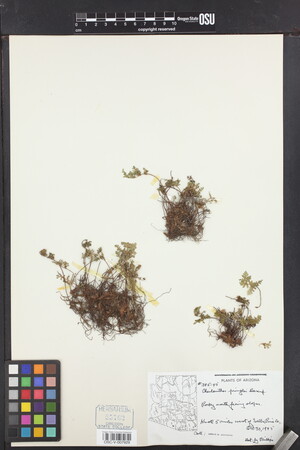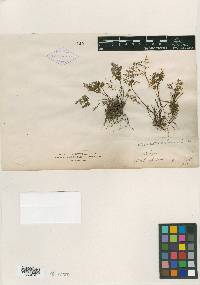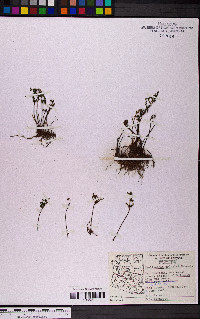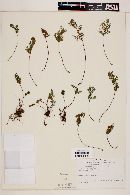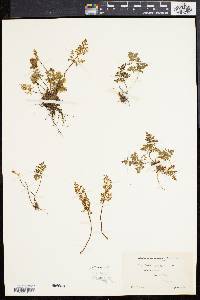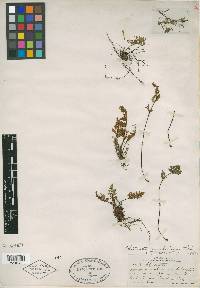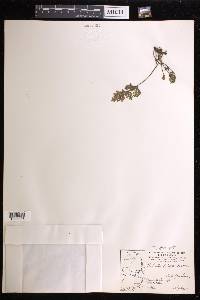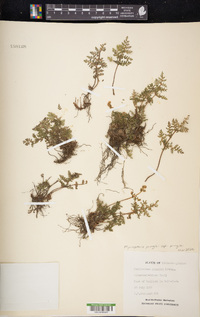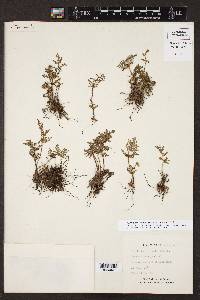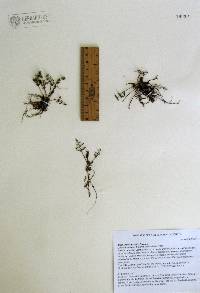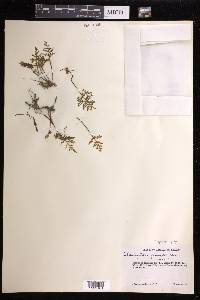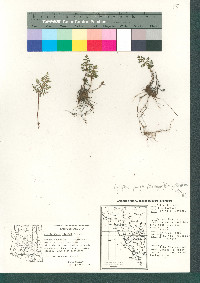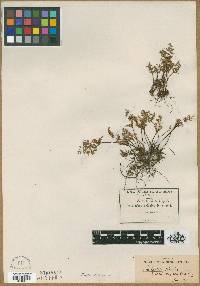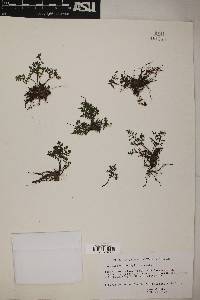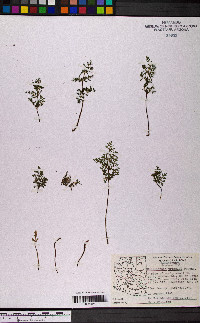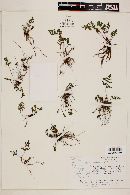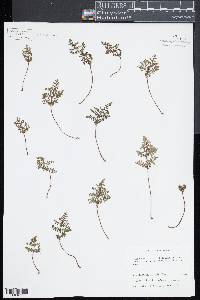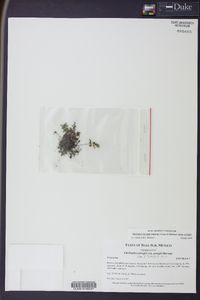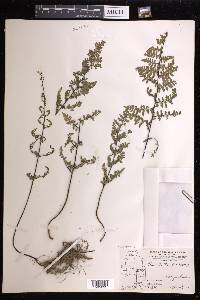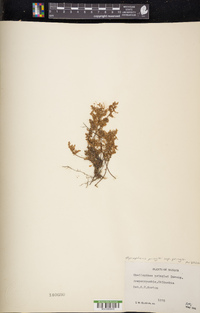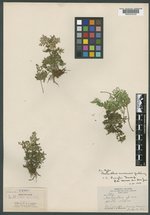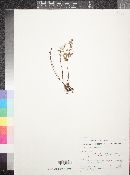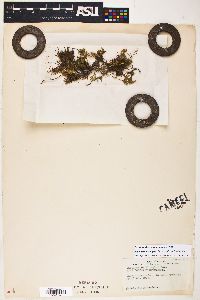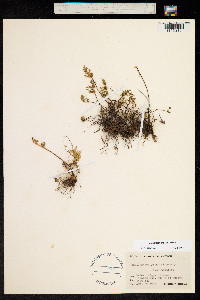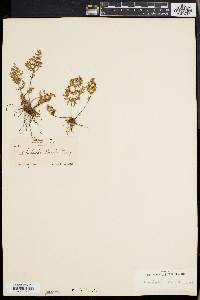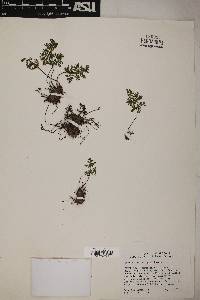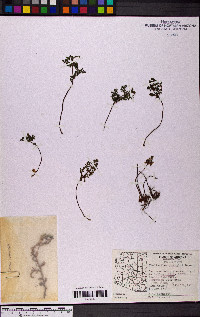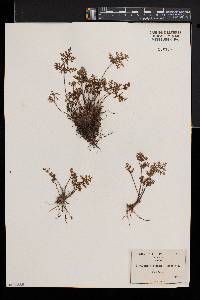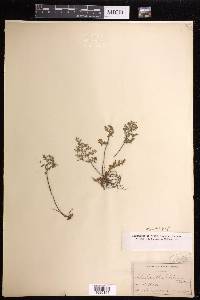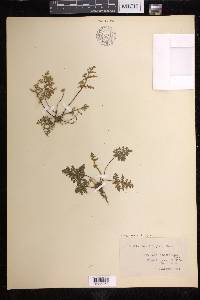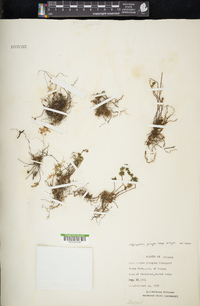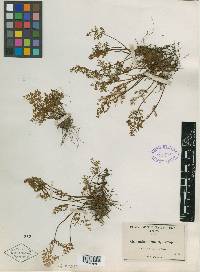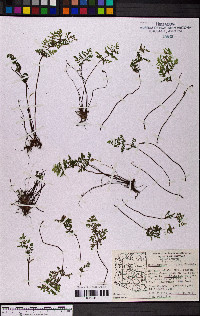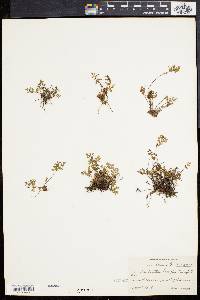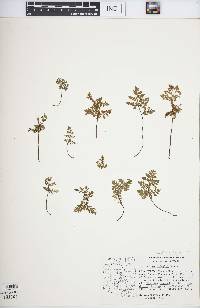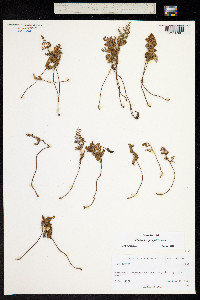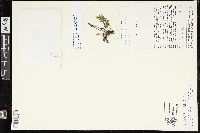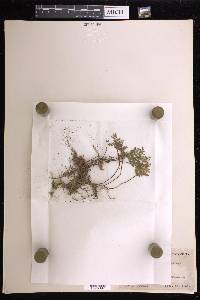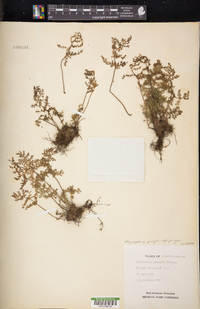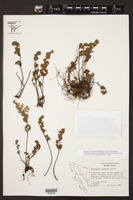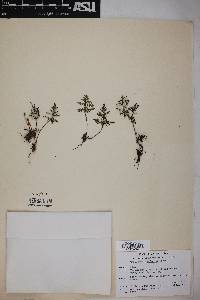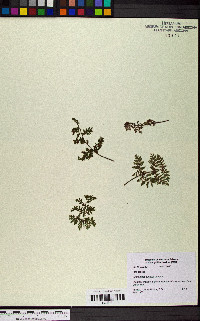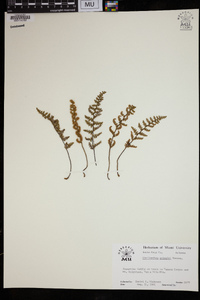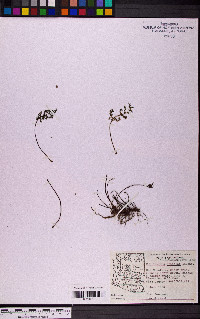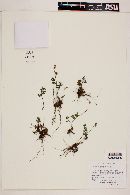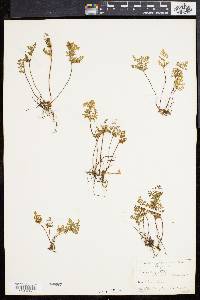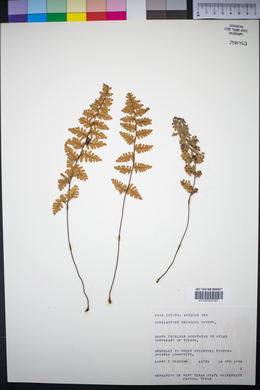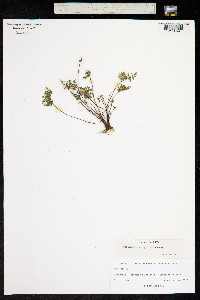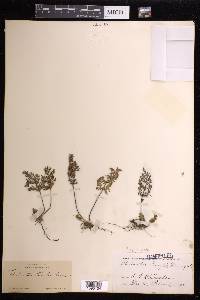
|
|
|
|
Family: Pteridaceae
Pringle's Lip Fern, more...Pringle's lipfern, Pringle lipfern (es: helecho)
[Cheilanthes pringlei Davenp.] |
Stems long-creeping, 1--3 mm diam.; scales uniformly brown or with poorly defined, dark, central stripe, linear-lanceolate, straight to slightly contorted, loosely appressed, usually persistent. Leaves clustered to somewhat scattered, 4--15 cm; vernation noncircinate. Petiole dark brown, grooved distally on adaxial surface. Blade ovate-deltate, 3-pinnate-pinnatifid at base, 1.5--5 cm wide; rachis grooved adaxially, with scattered, lanceolate scales, not pubescent. Pinnae not articulate, dark color of stalk continuing into pinna base, basal pair conspicuously larger than adjacent pair, inequilateral, basiscopic pinnules enlarged, appearing glabrous adaxially. Costae green adaxially for most of length; abaxial scales multiseriate, lanceolate, truncate or subcordate at base, without overlapping basal lobes, conspicuous, the largest 0.4--0.8 mm wide, loosely imbricate, not concealing ultimate segments, erose, not ciliate. Ultimate segments spatulate, not especially beadlike, the largest usually 2--3 mm, abaxially glabrous or with a few small scales near base, adaxially glabrous. False indusia marginal, weakly differentiated, 0.05--0.25 mm wide. Sori discontinuous, confined to apical or lateral lobes. Sporangia containing 64 spores. 2 n = 60. Sporulating late spring--fall. Rocky slopes and ledges, usually on igneous substrates; 700--1200 m; Ariz.; n Mexico. Cheilanthes pringlei is often confused with young, sterile plants of C . fendleri , but it is easily distinguished from the latter by having rachises that are grooved adaxially. This species appears to be restricted to the Sonoran Desert; records from Gila and Cochise counties, Arizona, and southern New Mexico are based on misidentifications.
General: Perennial ferns, evergreen, with long and creeping rhizomes 1-3 mm in diameter, with abundant, small linear-lanceolate basal scales, these straight to slightly contorted, loosely appressed, dark, shining, and uniformly brown or with a poorly defined dark, Leaves: Clustered to somewhat scattered, blades ovate-deltate in outline, 3-pinnate-pinnatifid at the base, 1.5-5 cm wide, the dark color of the stalk continuing into the pinna bases, pinnae in many pairs, the basal pair conspicuously larger than the adjacent pair and unequal, the veins all free, not reaching the margins, clavate at the tips and mostly forked, pinnae 4-15 cm long with the ultimate divisions of the pinnae facing the base enlarged, surfaces with conspicuous, scattered, lanceolate scales on the midribs, abaxial scales in many series, these lanceolate, truncate or subcordate at the base and with erose tips, the largest 0.4-0.8 mm wide, loosely overlapping but not concealing the ultimate segments, surfaces not ciliate, ultimate segments spatulate, not especially beadlike, the largest usually 2-3 mm, abaxially glabrous or with a few small scales near the base and glabrous above, the midribs of the pinnae prominent, green adaxially for most of their length, other pinnae surfaces glabrous or nearly so, the rachis grooved above, the leaf arrangement in bud not coiled from the leaf downward. Sporangia: Confined to the submarginal vein tips or scattered along veins near the segment margins, usually protected by the reflexed leaf margins, containing 64 spores, these not intermixed with farina-producing glands, spores brown to black or gray, rarely yellowi Ecology: Found usually on igneous substrates, on rocky slopes and ledges, cliff bases, from 2,500-5,000 ft (762-1524 m); sporulating late spring-fall. Notes: The keys to this species are the segments not round or beadlike, the pinnae scaly, at least on the midribs, and glabrous or nearly so, the rhizomes creeping. Look for it in the mountains of Gila, Cochise, and Pima counties in Arizona. FNA notes that; "Cheilanthes pringlei is often confused with young, sterile plants of C . fendleri, but it is easily distinguished from the latter by having rachises that are grooved adaxially. This species appears to be restricted to the Sonoran Desert; records from Gila and Cochise counties, Arizona, and southern New Mexico are based on misidentifications." Etymology: Cheilanthes is from Greek cheilos for lip and anthos for flower, while pringlei is named for Cyrus Guernsey Pringle (1838-1911) who collected for Asa Gray at Harvard. Sources: FNA 1993, Kearney and Peebles 1969 FNA 1993, Kearney and Peebles 1969 Common Name: Pringle's lipfern Rarity: None General: Perennial ferns, evergreen, with long and creeping rhizomes 1-3 mm in diameter, with abundant, small linear-lanceolate basal scales, these straight to slightly contorted, loosely appressed, dark, shining, and uniformly brown or with a poorly defined dark, central stripe, this usually persistent. Leaves: Clustered to somewhat scattered, blades ovate-deltate in outline, 3-pinnate-pinnatifid at the base, 1.5-5 cm wide, the dark color of the stalk continuing into the pinna bases, pinnae in many pairs, the basal pair conspicuously larger than the adjacent pair and unequal, the veins all free, not reaching the margins, clavate at the tips and mostly forked, pinnae 4-15 cm long with the ultimate divisions of the pinnae facing the base enlarged, surfaces with conspicuous, scattered, lanceolate scales on the midribs, abaxial scales in many series, these lanceolate, truncate or subcordate at the base and with erose tips, the largest 0.4-0.8 mm wide, loosely overlapping but not concealing the ultimate segments, surfaces not ciliate, ultimate segments spatulate, not especially beadlike, the largest usually 2-3 mm, abaxially glabrous or with a few small scales near the base and glabrous above, the midribs of the pinnae prominent, green adaxially for most of their length, other pinnae surfaces glabrous or nearly so, the rachis grooved above, the leaf arrangement in bud not coiled from the leaf downward. Sporangia: Confined to the submarginal vein tips or scattered along veins near the segment margins, usually protected by the reflexed leaf margins, containing 64 spores, these not intermixed with farina-producing glands, spores brown to black or gray, rarely yellowi Ecology: Found usually on igneous substrates, on rocky slopes and ledges, cliff bases, from 2,500-5,000 ft (762-1524 m); sporulating late spring-fall. Ethnobotany: Unknown, but other species in the genus have uses. Etymology: Cheilanthes is from Greek cheilos for lip and anthos for flower, while pringlei is named for Cyrus Guernsey Pringle (1838-1911) who collected for Asa Gray at Harvard. Synonyms: Cheilanthes sonorensis Editor: LCrumbacher2012 |
|
|
|
This project was made possible in part by the Institute of Museum and Library Services [MG-70-19-0057-19].
Powered by Symbiota

